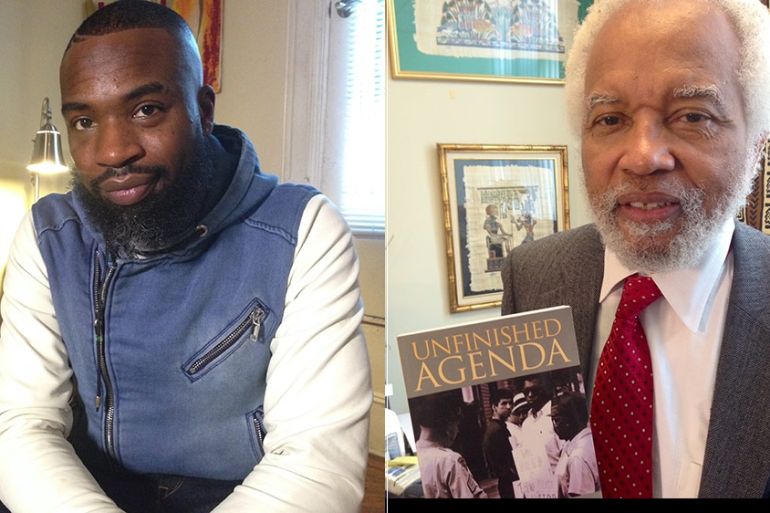The fight for civil rights in the US, then and now
Two generations of activists explain how the African-American struggle has changed and evolved

Junius Williams thumbs through his new book, Unfinished Agenda , his life story tracing nearly four decades of finding himself on the frontline of the civil rights movement in America.
He knows the civil rights struggle. He lived it.
Keep reading
list of 4 itemsFears of discrimination in Thailand despite looming same sex marriage bill
Hong Kong legislature passes tough new national security law
Why is India’s Citizenship Amendment Act so controversial?
In March 1965 Williams was a 21-year-old college student from the East Coast who went to Montgomery, Alabama to volunteer to be part of the civil rights protests and got a fast introduction to what it was going to be like.
“There were horsemen with long, thick sticks and police on motorcycles and their job was to beat the hell out of us,” Williams told me from his office at Rutgers University where he now teaches. “What was our crime? We wanted the right to vote for everybody. So in my first 15 minutes there was blood everywhere.”
Williams’ group of protesters was trying to stage a sit-in at the state capitol while waiting for Dr Martin Luther King and his group to finish their historic walk from Selma to Montgomery.
“Our group got too big for the police to handle. So we marched downtown and the state cops said, ‘you can’t march on the streets.’ And then local cops said, ‘you can’t march on the sidewalk.’ So we just sat down, and then got arrested.”
RELATED: The unsung American heroes of Selma
Williams recounts another story where they tried to take shelter in a church from baton wielding police, but someone in the church shut the front door so they couldn’t get inside.
Williams and others were cornered with police approaching them, threatening them with another beating. Williams was full of fear.
That’s when someone in his group started to sing.
“This may be the last time, may be the last time, I don’t know,” Williams said, recounting the lyrics he says he’ll never forget.
At that moment the police backed down. “On that day something overcame the fear,” he said.
Williams is a product of the civil rights struggle, and believes today the movement has lost some of its identity.
“We got a lot of firsts accomplished back then like the right to vote and we put a lot of faith in that process,” he says. “But in doing so we forgot the bridge that brought us over. And that bridge is organisation that was good at confrontation politics. Younger generations forgot about that. Today we have mobilisation without organisation.”
|
|
| In the US, the fight for equality still goes on |
Darnell Moore wasn’t even born when Williams was in Montgomery in the 1960’s, but he represents a younger generation of movement leaders.
Moore is an outspoken gay African American writer, lecturer, professor and community organiser from Brooklyn who sees black struggle as a much more encompassing and diverse movement than it was before.
“The face of what one might call movement work is now made up of queer folk, women, disabled individuals, formerly incarcerated individuals, of undocumented people, all of whom are on the front lines and working,” he said.
“Those young people in Ferguson with jeans and hats are not the suit-and-tie-wearing Christian ministers and religious leaders or respectable middle class brothers of our past. Today there is a space for everybody. That is critically important.”
Moore readily admits there are differences between the older generation of civil rights activists and the younger ones, but he says that is natural and attributes it to “different points of time in a different space”.
America’s older guard of civil rights activists is celebrating the march over the bridge in Selma a half century ago, while the younger generation like Moore are taking that struggle of those that came before them and making it their own.
Follow Gabriel Elizondo on Twitter @ElizondoGabriel